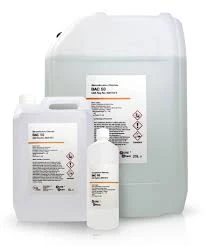polyaluminum chloride coagulant
The Role of Polyaluminum Chloride Coagulant in Water Treatment
Water treatment is a crucial process that ensures the safety and quality of the water we consume. Among the various chemicals used in this process, polyaluminum chloride (PAC) has gained prominence due to its effectiveness and versatility. A coagulant, PAC plays a vital role in the removal of contaminants from water, making it a popular choice in municipal water treatment facilities as well as industrial applications.
What is Polyaluminum Chloride?
Polyaluminum chloride is a water-soluble inorganic polymer that consists of multiple aluminum ions connected by hydroxyl groups. Its chemical formula can vary, typically represented as Aln(OH)mCl3n-m, where n represents the degree of polymerization, and m adjusts the ratio of hydroxides to aluminum. PAC is characterized by its high charge density, which enhances its coagulation properties compared to traditional aluminum sulfate (alum).
Mechanism of Action
The coagulation process involves the aggregation of finely dispersed particles into larger flocs that can be easily removed from the water. When PAC is added to water, it dissociates, releasing aluminum ions that interact with suspended particles, including organic matter, silt, and colloids. This interaction neutralizes the negative charges on the particles, allowing them to clump together and form larger particles known as flocs. The flocs can then be efficiently removed through sedimentation or filtration, leading to clearer and cleaner water.
Advantages of Using PAC
1. Higher Efficiency One of the significant advantages of PAC over traditional coagulants such as alum is its higher efficiency at a lower dosage. PAC can achieve effective coagulation across a broader pH range, making it suitable for diverse water conditions. This efficiency translates to reduced chemical costs and lower waste generation.
polyaluminum chloride coagulant

2. Improved Water Quality The use of PAC leads to better water quality in terms of turbidity and color removal. The floc formation is denser and settles more rapidly compared to that of alum, resulting in clearer effluent. This is particularly important in applications where water clarity is crucial, such as in potable water supplies.
3. Reduced Sludge Production The production of sludge is a common byproduct of coagulation processes. PAC generates less sludge compared to alum, leading to simpler disposal and lower operational costs. This characteristic is particularly favorable for treatment facilities that are constrained by space or environmental regulations.
4. Versatility PAC can be used in various applications beyond municipal water treatment, including wastewater treatment, paper manufacturing, and even in food processing. Its versatility makes it an attractive option for different industries requiring efficient coagulation and clarification processes.
Environmental Considerations
While PAC presents several advantages, it is crucial to consider the environmental impacts associated with its use. The aluminum ions in coagulants can potentially pose risks to aquatic ecosystems if not managed appropriately. Therefore, effective monitoring and regulation are essential to mitigate any negative consequences of aluminum discharge into water bodies.
Conclusion
Polyaluminum chloride is a powerful coagulant that significantly enhances water treatment processes. Its high efficiency, improved water quality outcomes, reduced sludge production, and versatility make it an essential tool for water treatment facilities worldwide. However, as with all chemical treatments, it is vital to utilize PAC responsibly, ensuring that its application does not compromise environmental safety. As research continues to advance in water treatment technologies, PAC remains at the forefront, contributing to the ongoing effort to provide safe and clean water for communities across the globe. The future of water treatment will undoubtedly see further innovations, but the role of polyaluminum chloride will likely remain a key component in achieving these goals.
-
LK-319 Special Scale And Corrosion Inhibitor For Steel Plants: Advanced Solutions for Industrial Water SystemsNewsAug.22,2025
-
Flocculant Water Treatment: Essential Chemical Solutions for Purification ProcessesNewsAug.22,2025
-
Isothiazolinones: Versatile Microbial Control Agents for Industrial and Consumer ApplicationsNewsAug.22,2025
-
Scale Inhibitor: Key Solutions for Water System Scale PreventionNewsAug.22,2025
-
Organophosphonates: Versatile Scale Inhibitors for Industrial Water SystemsNewsAug.22,2025
-
Scale and Corrosion Inhibitor: Essential Chemical Solutions for Water System MaintenanceNewsAug.22,2025





